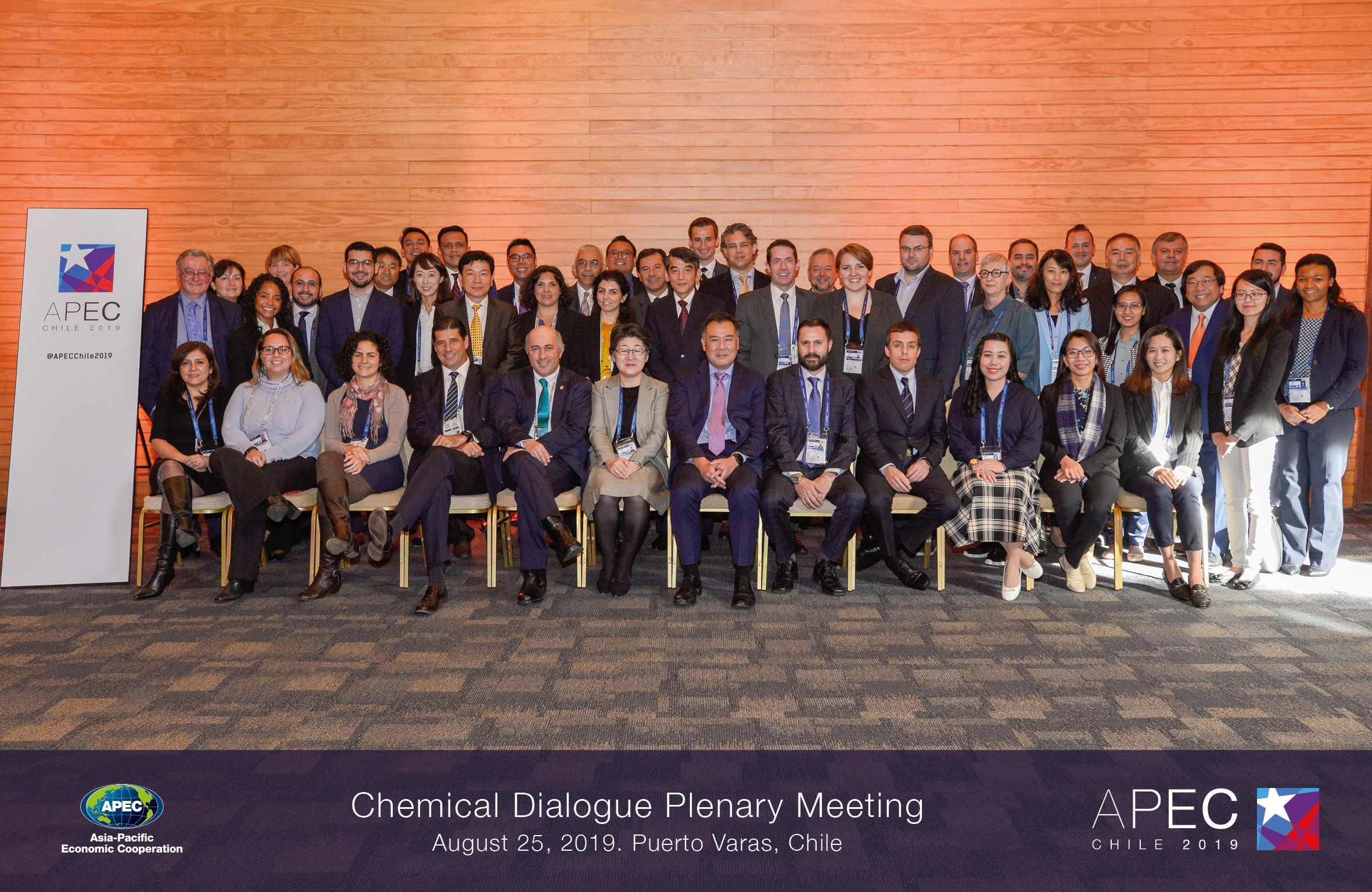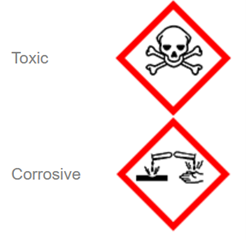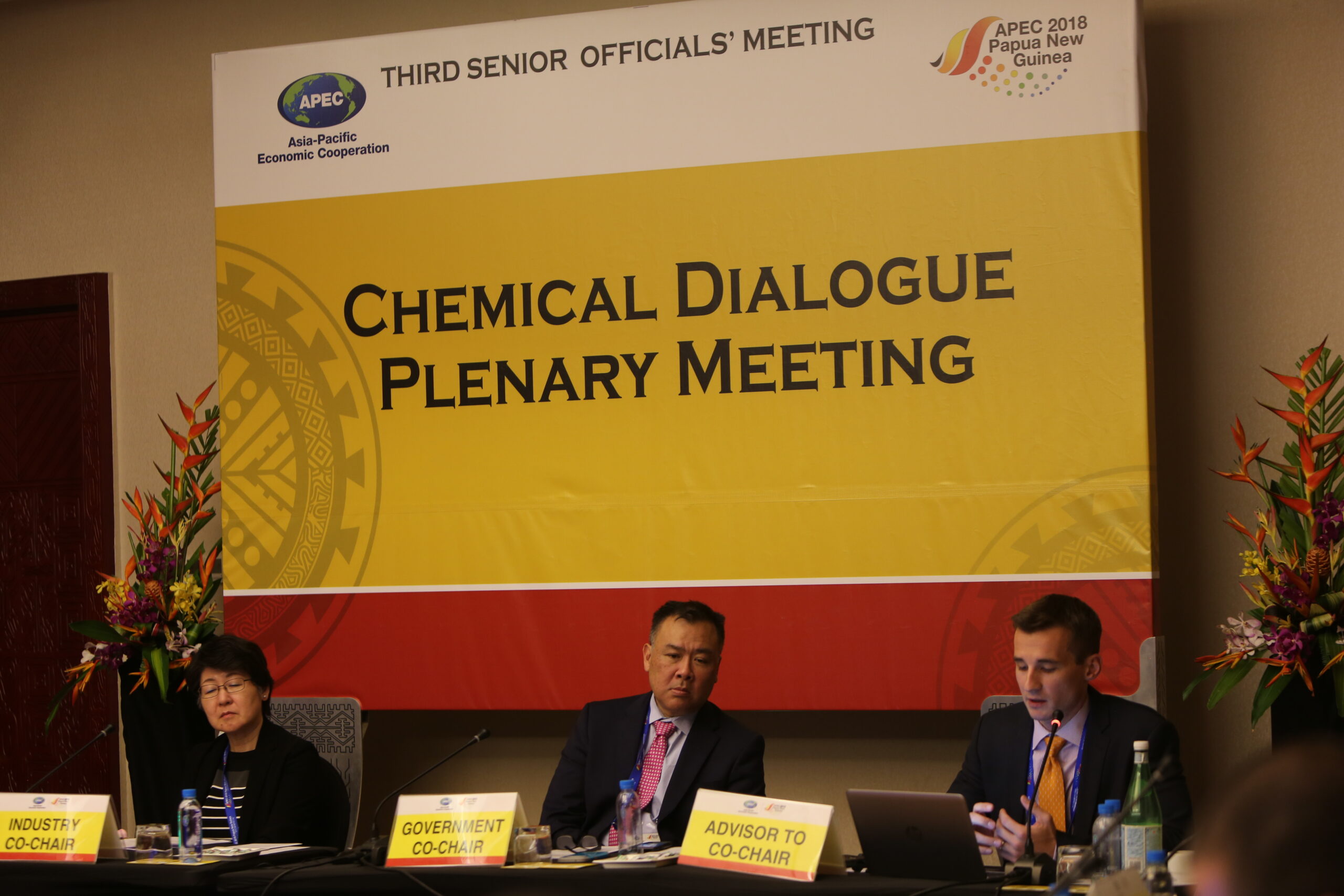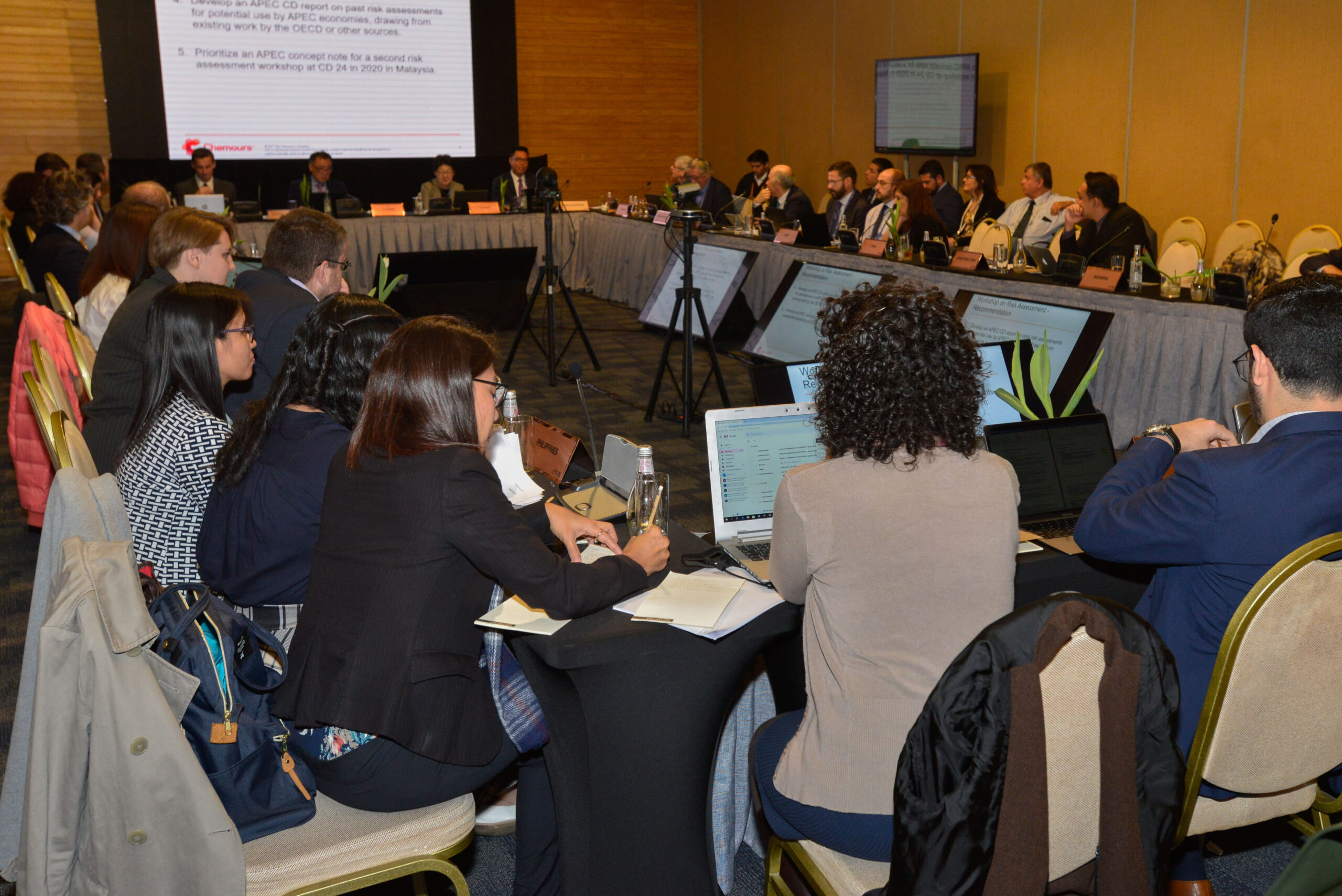Asia-Pacific Economic Cooperation Chemical Dialogue:
Regulatory Cooperation Workstreams and the Virtual Working Group on the Globally Harmonized System of Classification and Labelling of Chemicals
The chemical industry drives global economic growth and serves as a critical component of more than 85% of manufacturing supply chains, underpinning millions of jobs throughout the Asia-Pacific region. Sound regulations efficiently administered can promote safe and secure trade in products, but overly restrictive barriers to trade in chemicals can increase costs for producers and ultimately lead to less competitive production. It is critical that governments and industry cooperate with one another to strike an effective balance that enables freer, safer trade in chemical products.
The Asia-Pacific Economic Cooperation Chemical Dialogue (APEC CD) serves as a forum for government officials and industry representatives to find solutions to challenges facing the chemical industry and users of chemicals in the Asia-Pacific region. It reflects APEC member economies’ recognition of the importance of engaging with the private sector and building public-private sector dialogue and cooperation for mutual benefit. There are a number of workstreams related to regulatory cooperation in the Chemical Dialogue. These largely fall under the above-mentioned Virtual Working Group for Globally Harmonized System of Classification and Labelling of Chemicals (GHS), the Virtual Working Group on Regulatory Convergence and Cooperation, and the APEC CD’s Regulators Forum.
The APEC CD’s Regulators Forum was created in 2009 to address two fundamental needs for continued economic growth and integration in the chemical industry: (1) greater capacity and technical prowess among chemical sector regulatory officials in APEC economies; and (2) increased regulatory cooperation and alignment within the region.

Photo Credit: APEC Secretariat
GHS Pictograms and Hazard Classes
Examples of recommended standardized pctograms for the Globally Haemonized System of Classification and Labelling of Chemicals
Physical Hazards Pictogram

Health Hazards Pictograms

Environmental Hazards Pictograms
- Acute hazards to the aquatic environment, category 1
- Chronic hazards to the aquatic environment, categories 1, 2

The Virtual Working Group on GHS
The APEC CD’s Virtual Working Group on GHS (VWGGHS) promotes consistent implementation of the UN’s Globally Harmonized System (GHS) of Classification and Labelling of Chemicals. Attaining consensus at the UN World Summit on Sustainable Development in Johannesburg in 2002, GHS has been identified as one of the main tools to achieve sound management of chemicals and is consistently raised as an issue for implementation of the international sustainable development agenda. It is designed to replace the various classification and labelling standards used in different economies by using consistent criteria for classification and labelling on a global level. The APEC GHS Clearinghouse Website Project (the GHS Reference Exchange and Tool (G.R.E.A.T.) Project) was established in 2009 to facilitate international GHS implementation and international trade. Refinement of the G.R.E.A.T. website reporting template would be subsequently captured as a strategic action item for the CD Regulators’ Forum.
Main Characteristics of Cooperation
With support from APEC economies, Chinese Taipei launched the GHS Clearinghouse Website in May 2010 to provide GHS labelling elements and relevant information from economies around the world. Revised in 2017 to encompass new translation functions and better track progress towards UN GHS harmonization, there have been over 300,000 visits to the website in the last decade (calculated in July 2021). These functions allow the site to aid in the creation of infographics capturing implementation updates and survey reports for the annual APEC CD GHS Implementation Convergence Report from the VWGGHS.
Based upon recommendations made during the 24th CD meeting in 2021, Chinese Taipei has added a new visual tool capturing survey results from the annual GHS Implementation Convergence Questionnaire to allow for visualization of the updated GHS implementation status across APEC and may assist in encouraging further convergence efforts in the region. Examples of the data captured under this initiative are available in the APEC CD GHS Implementation Convergence Report under the VWGGHS, and in the infographic on the right.


Photo Credit: APEC Secretariat
APEC Virtual Working Group on Regulatory Convergence and Cooperation
In conjunction with the implementation of GHS, the Virtual Working Group on Regulatory Convergence and Cooperation (VWGRCC) hosts multiple regulatory cooperation workstreams aiming to build capacity and technical skills among chemical sector regulatory officials in APEC economies and increase cooperation and regulatory alignment within the region. This work helps to reduce non-tariff barriers and make regulatory systems more efficient while maintaining high levels of protection for human health, safety, and the environment.
Main Characteristics of Cooperation
Most recently, APEC economies endorsed the APEC CD Regulatory Cooperation Report, which identifies, shares, and captures best practices and actionable approaches for APEC chemical regulators seeking to engage in regulatory cooperation with trade partners. The Report provides a range of regulatory cooperation mechanisms available in the chemical sector through case studies from current bilateral cooperation, regional cooperation, and global cooperation. The information included in this report was voluntarily submitted by CD members and represents a non-exhaustive list of regulatory cooperation activities in the region.
To supplement the Regulatory Cooperation Report, APEC economies endorsed the APEC CD Regulatory Cooperation Checklist, that provides APEC economies and their regulators a step-by-step guide to implementing regulatory cooperation discussions. The components for regulatory cooperation reflect a sub-set of best practices identified by other international organizations such as the OECD’s International Regulatory Co-operation Toolkit. The Checklist works within the framework already provided by the OECD Toolkit, but provides a step-by-step, practical process to support an APEC economy that is interested in entering regulatory cooperation discussions with a partner economy.
To address the lack of capacity and inefficiencies in risk assessment procedures that can act as barriers to trade, the VWGRCC developed the “Facilitating Trade by Improving Risk Assessment Capacity” project, aimed to address this gap by engaging officials through an interactive, “tabletop exercise.” This tabletop exercise allowed participants to work through real-world challenges and discuss practical approaches to risk assessment decision-making in a resource-limited, multi-stakeholder environment. Chemical regulators and industry representatives gained a “hands-on” experience employing risk assessment/risk management procedures under realistic conditions, and shared recommendations.

Photo Credit: APEC Secretariat

Photo Credit: APEC Secretariat
Assessment
APEC Economies are working towards some aspects of convergent implementation of GHS, primarily the basic elements of classifications, safety data sheet formats, and labelling. Despite the obvious benefits from GHS implementation, many challenges exist in economies, including adopting later revisions of classifications. Although significant progress has been made to adopt GHS around the globe, many economies have only experienced partial implementation across specific sectors and often only within the workplace. Political will, resources, and stakeholders’ engagement are crucial within this process. There also needs to be the capacity to comply and enforce GHS on the ground, including ensuring accurate data in safety data sheets within the supply chain.
Tackling complex, inter-connected and rapidly changing trans-boundary policy challenges requires economies to work together. International regulatory cooperation (IRC) plays a strong role to “harness” and create common rules of globalization and mobilizes an extensive variety of actors in the domestic and international rulemaking environment. This includes law makers and regulators across policy areas on the economy level, intergovernmental organizations, and international networks of regulators, among others. The GHS has been identified as one of the main tools to specifically achieve sound management of chemicals and facilitate international trade by promoting a uniform way for hazard assessment and communication. While the G.R.E.A.T web site has proven a useful resource to collect and provide GHS information by collaboration, it is definitionally limited by its dependence on voluntary surveying and standards adoption. While it does provide a useful starting point for economies in assessing and amending approaches to capture best practices, it is left to the conviction and energy of each economy to utilize offered resources and implement those best practices. Impact assessments are also limited as quantifiable web site visits are hard to tie to measurable outcomes for member economies, and there is significant self-selection to those offering updates on sectoral efforts.
Next Steps
Chinese Taipei continues to provide leadership for the CD’s GHS efforts. Chinese Taipei plans a self-funded project that will include a series of webinars on the GHS capturing both regulator and industry perspectives around the following: (1) issues of GHS maintenance (welcome the latest developments); (2) how‐to‐start issues and the importance of GHS promotion/ capacity & capability building; (3) data issues within the supply chain. Stemming from these engagements, reporting on lessons learned and a consolidated database for resources (encompassing helpful tools, reports, and articles) will be prepared for distribution to interested parties through the UN GHS Sub-Committee and the United Nations Institute for Training and Research.
In 2022, the VWGRCC has built on the momentum of the regulatory cooperation report and checklist by building a compendium of regulatory cooperation resources for APEC economies to utilize. The Facilitating Trade by Improving Risk Assessment Capacity project will host an in-person workshop in Thailand if public safety allows.
Endnotes
[1] “APEC Chemical Dialogue: Regulatory Cooperation Report.” APEC.org, December 1, 2020. Asia-Pacific Economic Cooperation (APEC). https://www.google.com/url?sa=t&rct=j&q=&esrc=s&source=web&cd=&ved=2ahUKEwjfrvOZodnzAhVBmWoFHfEsAEcQFnoECAMQAQ&url=https%3A%2F%2Fwww.apec.org%2F-%2Fmedia%2FFiles%2FGroups%2FCD%2F2020%2FChemical-Dialogue-Regulatory-Cooperation-Report—clean.docx&usg=AOvVaw3xyIynWpKV8GstNXQ87Lba
Date: This case study was written in 2021 and finalised in 2022.